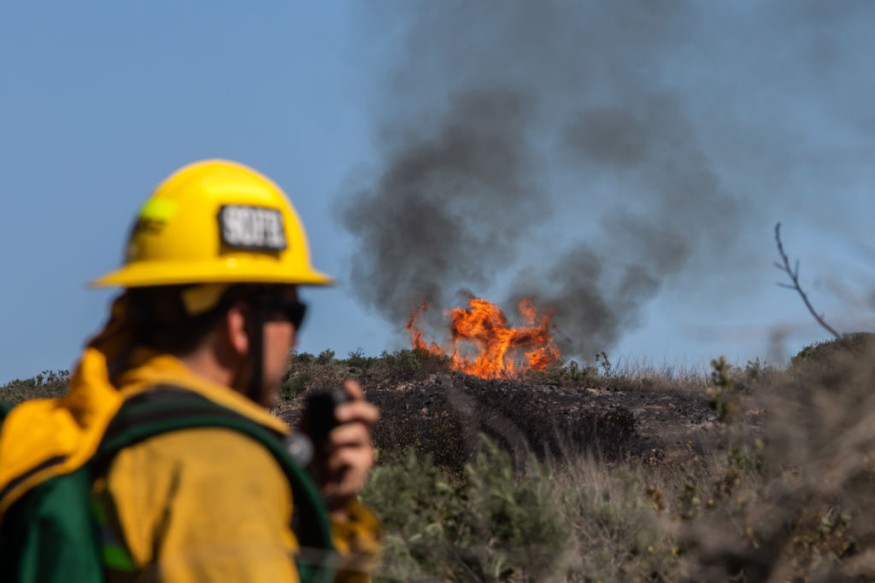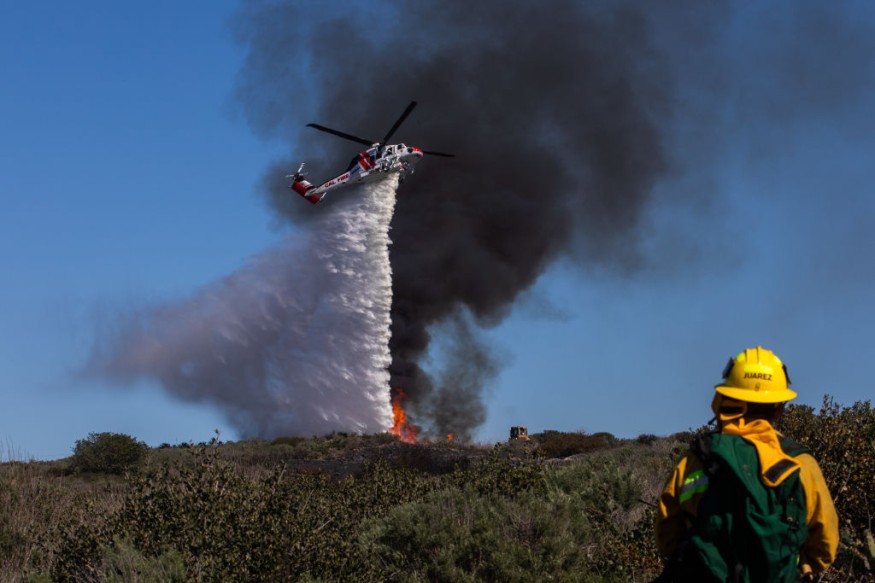Early Thursday, a wildfire sparked by blustery Santa Ana winds erupted in hills along the coast of Southern California, burning near residences.

Flames Bursting
The fire erupted over the gated Emerald Bay subdivision in Laguna Beach, roughly 45 miles southeast of Los Angeles. It's not clear if there's been any damage.
According to the Orange County Fire Authority, the incident was reported just after 4 a.m. with a total area of 7 acres (2.8 hectares)
Emerald Bay and the Irvine Cove neighborhood have been ordered to evacuate by the city of Laguna Beach via Twitter. The evacuation of North Laguna was ordered. According to the local school district, all schools have been closed.
In the predawn darkness, television news helicopters showed a helicopter dropping water on the flames and multiple fire vehicles in the neighborhood.
The fire broke out with strong winds and suffocatingly low humidity levels as Southern California was wracked by a winter heat wave that sapped vegetation's moisture.
With a population of 23,000 people, Laguna Beach is surrounded by beautiful beaches and coves that attract millions of visitors each year. In the exact location in 1993, a wind-driven fire destroyed over 300 houses and damaged over 500 more.
Read More: Record-Breaking Heat Across L.A. Makes the Hottest Super Bowl Kickoff Ever
Wildfires
Unlike planned burns, wildfires are unintentional flames that occur in natural settings such as woods, meadows, and prairies. Not only may these deadly flames harm communities, but they can also devastate wildfires and natural regions.
A wildfire, also known as a forest fire, ablaze, a wildland fire, or a rural fire, is a fire that starts in both rural and urban settings and is uncontrolled, unintentional, and unattended.
A wildfire can also be described as a forest fire, brush fire, bushfire (in Australia), desert fire, grass fire, hill fire, peat fire, prairie fire, vegetation fire, or veld fire, depending on the kind of vegetation present.
You may get notifications in a variety of ways. Get real-time reports from the National Weather Service for up to five areas around the country by downloading the FEMA app.
Be aware of the Emergency Alert System (EAS) and the Wireless Emergency Alert (WEA), which do not need registration, and sign up for community alerts in your region.
Evacuation

If you need to escape fast, make sure everyone in your family knows what to do. A wildfire might force you to flee as soon as possible. Learn your evacuation routes, practice with your family and pets, and plan your journey.
Follow the directions given by the authorities in your area. They'll provide the most up-to-date suggestions based on the threat to your neighborhood's safety as well as the necessary precautions.
Fireproofing
When building, renovating, or repairing, use fire-resistant materials. Find a hose that can reach any part of your property and an outdoor water supply. A room that can be closed off from the outside air should also be designated.
Turn off all lights and shut all windows and doors as soon as possible. Set up a portable air cleaner to reduce inside pollution to a minimum when it's hazy outside.
© 2025 NatureWorldNews.com All rights reserved. Do not reproduce without permission.





